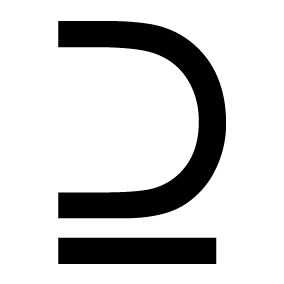
In Talks with Bhu Nyström-Kandola

At Volvo, success in competitiveness lies not only in attracting talented designers but also in managing to retain these individuals over time by offering development opportunities within their profile or interests. This is, of course, not only aimed at designers but applies to all high-performing teams. Employers must dare to think more outside the framework of the most urgent need and instead create a work environment where employees both see that there is room for development and where their skills are valued and add value. This approach not only helps in retaining top talent but also in building a cohesive and high-performing team.
“You can’t think of increasing the value, the number of designers until you are able to show that you are delivering impact, right? It has to be capability driven.” The design team at Volvo often takes a step back to redefine problems and create proper problem definitions, ensuring their work is impactful and aligned with business goals.”
1. Proving the Value of Design
Collaboration and Stakeholder Engagement
Effective collaboration is crucial for proving the value of design.
“We need product specifically, but also engineering to support us. You need product first to understand the value of design before you even go to the business stakeholder.”
Therefore, working with, not for, business stakeholders is key. and ensures that stakeholders are part of the process, fostering a shared understanding and appreciation of design’s value.
We have established WoW around OKRs (Objectives and Key Results) and have found that this is an effective tool. It contributes to an open structure where the entire team can influence and be kept updated on the upcoming period’s goals, progress and development focus. Collaboration and alignment between design, product, and engineering teams are crucial. By defining requirements and deadlines together, they can deliver impactful designs within the given timeframe
“Having a tight collaboration between those three at least, our triad in digital, is super important because then we are defining together, OK, the requirements are this, the deadline is this, what can we do in that period of time to deliver a really impactful feature design or release.”
Incentives and Impactful OKRs
In addition to clear roles and growth opportunities, having clear incentives within the delivery process is a key factor in maintaining a motivated and high-performing team. Objectives and Key Results (OKRs) are an effective tool in this regard. They provide a structured approach to setting and achieving goals, ensuring that every team member understands their impact on the organization’s success.
Nyström-Kandola highlights the importance of collaboration in defining OKRs:
“Having a tight collaboration between those three at least, our triad in digital, is super important because then we are defining together, OK, the requirements are this, the deadline is this, what can we do in that period of time to deliver a really impactful feature design or release.”
2. Recruitment
Beyond Recruitment
Recruitment is often seen as the primary challenge in building a successful team. However, the real challenge lies in what happens after the hiring process. Maintaining a workforce that feels valued and sees a clear trajectory for their career is crucial.
“The biggest challenge actually with recruiting is usually after recruitment. It’s about maintaining the workforce, making sure that people see that they are valued and that their work is valued.”
3. Possibilities for Personal Growth
Clear Roles and Growth Opportunities
One of the most fundamental aspects of employee retention is providing clear roles and opportunities for growth. Employees need to understand how they can develop within the organization and what steps they need to take to advance.
It’s important to have a clear career trajectory:
“Designers want to know where they can develop, how they can get better, and how they are measured.”
A well-defined career framework not only helps in setting expectations but also in fostering a sense of purpose and direction among employees. This framework should include skill development opportunities, career ladders, and transparent criteria for progression.
“You need to have some type of framework, some skill framework, some sort of career ladder. This helps in holding career development conversations and providing guidance,”
The Cost of High Employee Turnover
High employee turnover can be detrimental to an organization, both in terms of cost and lost productivity. Frequent recruitment to replace departing employees not only incurs significant costs but also disrupts the continuity of work and stakeholder relationships.
“Having a high churn rate directly impacts recruitment and can be a deterrent for potential hires.”

